Part of a series of articles titled Park Paleontology News—Vol. 17, No. 2, Fall 2025.
Article
Paleotería: A paleontological take on the classic Latino American game “La Lotería”
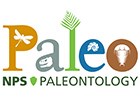
What is Paleotería?
Picture this: you’re sitting around a table with your family or friends, tokens scattered across your board. The caller announces a card, and everyone leans in with anticipation. Suddenly, you mark your final square, and with a triumphant grin, you shout, “¡Buenas!” But instead of winning with La Garza, your winning card is El Apatosaurio! This is the exciting world of Paleotería, a game that merges the cherished tradition of La Lotería with the wonder of paleontology.
La Lotería is a popular Latino American game that is a beloved cultural tradition, played at family gatherings, holiday celebrations, and community fiestas. The game consists of a deck of 54 illustrated cards, each representing an animal, person, object, or a piece of folklore in Hispanic culture. Players receive boards with a randomized selection of these cards, and as cards are called out, they mark them on their boards. The first player to complete a line, diagonal, or pattern shouts “¡Buenas!” and claims victory. Beyond its entertaining gameplay, La Lotería holds a unique place in Latino culture: it is a bridge between generations, a celebration of heritage, and a playful way to teach children about symbols, language, and folklore.
Paleotería (Pah-lee-oh-teh-ree-ah) is a fun mash-up between science and cultural awareness . Instead of familiar cultural icons like El Corazón or La Luna, Paleotería features 54 cards illustrated with fossils, prehistoric animals, notable careers, and objects inspired by the paleontology of the National Park Service. The game also includes an informational “joker” card that directs players to more information on the game. Whether you are an aspiring paleontologist, a Spanish learner, or simply someone interested in Latino culture and science, Paleotería provides a unique, educational, and fun experience for all!
Created from the NPS-PS Artist-in-Residence Fellowship
This project was able to come to life from the National Park Service–Paleontological Society Artist-in-Residence Program, part of the Paleontology in the Parks Fellowship Program. This program is a collaborative effort between the Paleontological Society and the National Park Service to help address fossil project needs in our national parks. Students, teachers, and professional and hobby paleontologists are all influential in protecting paleontological resources. The fellowship supports mentor-student pairs, in this case combining emerging artists with seasoned paleontologists or educators. Together, they develop projects that are visually engaging, scientifically accurate, and culturally inclusive. Students, teachers, professional paleontologists, and hobbyists all play vital roles in protecting paleontological resources. Through the fellowship, artists have the unique opportunity to translate complex scientific concepts into creative, approachable projects for the public. The collaboration seeks to enhance public understanding of paleontology through visually engaging projects.
Cards of Paleotería
Every card in Paleotería draws inspiration from the original Lotería artwork while introducing elements of paleontology such as professions, well-known fossils from parks, or important tools used in scientific research. The design process required careful thinking on how to preserve the recognizable visual style of the traditional cards while making the illustrations accurate and educational.Some notable examples of cards featured in the game are listed below:
- La Libreta Campo (The Field Notebook) closely resembles El Paraguas (The Umbrella), an essential tool field geologists and paleontologists use that’s well known to stand against harsh weather conditions, such as rain.
- La Madera Petrificada (The Petrified Wood) representing El Tambor from the original game, and depicting Araucarioxylon arizonicum, a kind of petrified wood commonly found in Petrified Forest National Park.
- El Quetzalcoatlus (The Quetzalcoatlus), mirroring El Pajaro, this card portrays Quetzalcoatlus northropi, a Cretaceous pterosaur found in Big Bend National Park.
- La Paleontóloga (The Paleontologist), depicts a woman with a fossil ammonite on one hand and a flat brush on the other, symbolizing the vital role women play in paleontology.
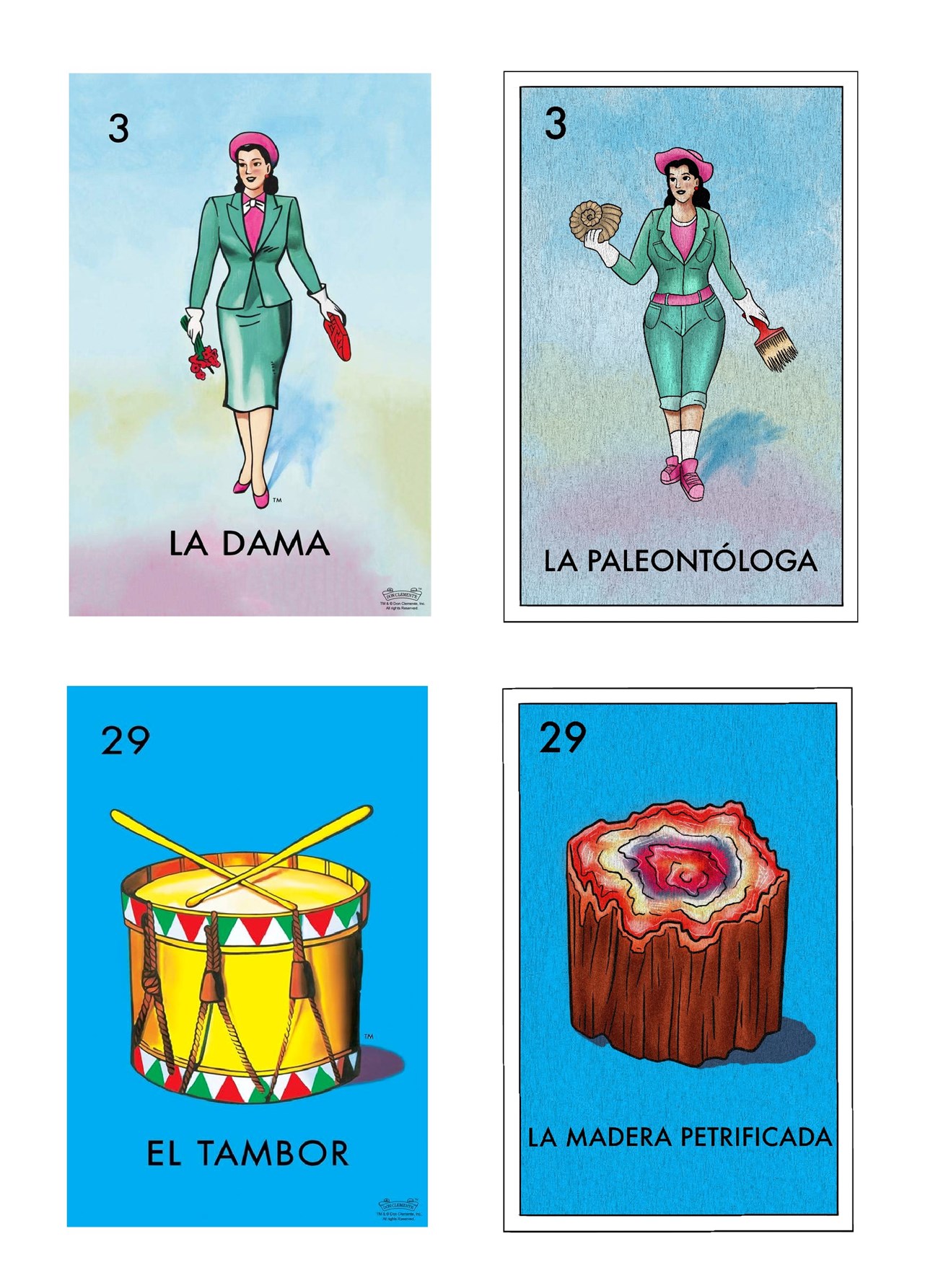
By Janet Cañamar, University of Texas at Austin
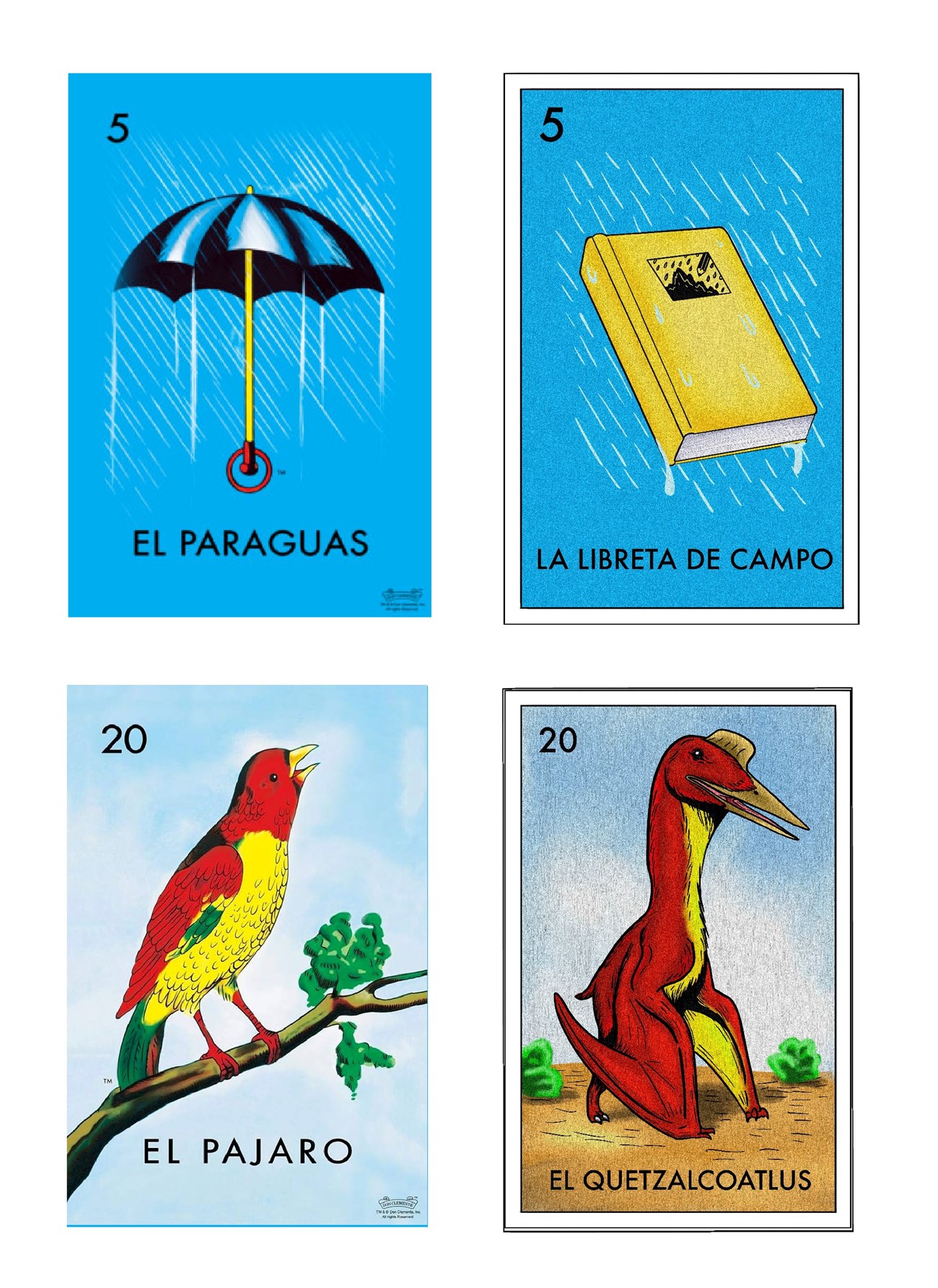
By Janet Cañamar, University of Texas at Austin
How to play Paleotería?
Setup
- All players must receive at least one board. Players will all agree on how many boards they can use.
- Tokens, coins, or beans are used to mark spaces on the boards. Other alternatives to mark spaces are welcome.
- One player is assigned as the Caller. The caller will be responsible for shuffling the cards before the game begins, and calling out the name of the card for players to hear. The players then mark the corresponding space if the card is present on their board.
- The assigned caller draws a card from the deck and announces the title of the card.
- Players check their boards if the announced card is present on their board. If present, players must mark out the grid the card is assigned in. If the card is not present, they must wait for the next card.
The first player to mark out a row, a column, four diagonally, all four corners, or a 2x2 square wins! The player must shout out “Buenas” to ensure their victory before the next card is announced. Failure to do so will have their win voided and the game continues.
Reception and reviews
The game had an early preview with the Texas Dinosaur Club, a student paleontology organization at the University of Texas at Austin. Club members tested the gameplay of Paleoteria, and the response was incredibly positive. Students found the game both fun and educational, enjoying the gamble of completing patterns while learning new scientific terms in Spanish. Many commented on how it helped them appreciate the cultural roots of Lotería while also sparking curiosity about fossils and National Parks.
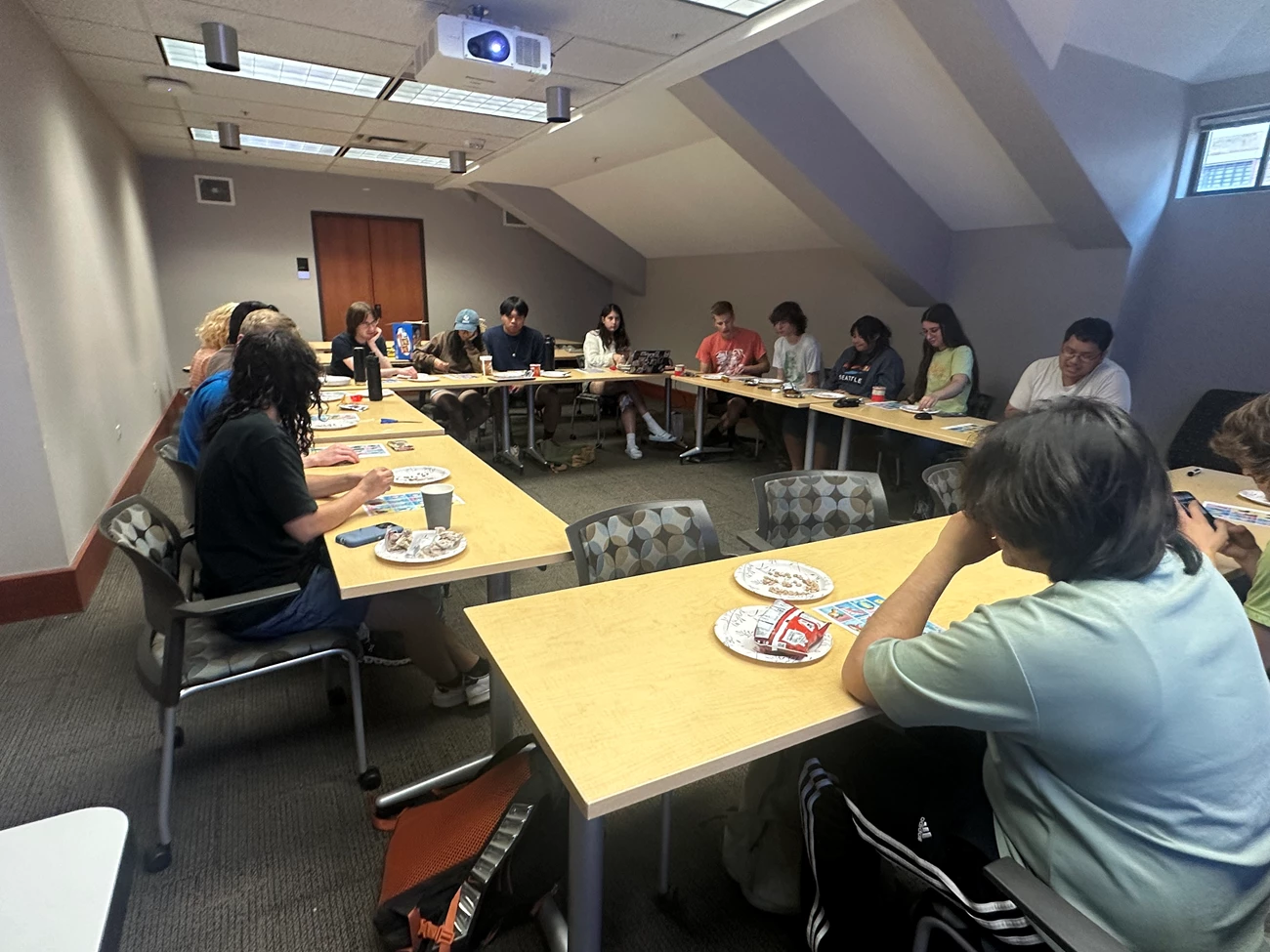
By Janet Cañamar, University of Texas at Austin
“Paleotería is a wonderful game with fantastic artwork! The game delivers a faithful experience of loteria with an educational opportunity to learn about the paleontology and geology of the National Parks. I love that the game is friendly to all players of all ages and backgrounds. I would highly recommend this as an entertaining introduction to paleontology and geology.”
These reactions reinforce the game’s dual mission: to entertain while educating, and to celebrate the intersections of science and culture.
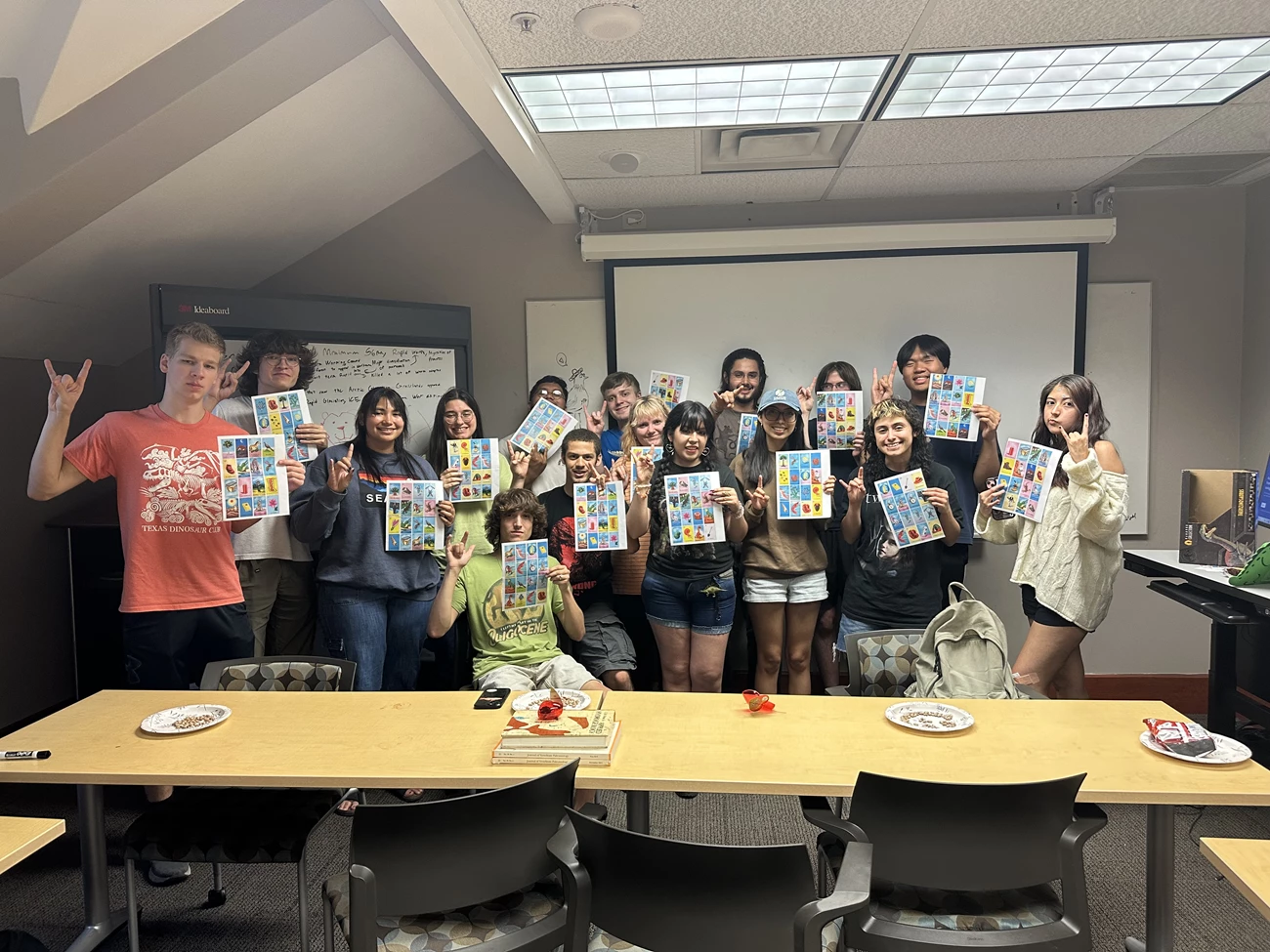
By Janet Cañamar, University of Texas at Austin
The student who led this project, Janet Cañamar, is an undergraduate geology student at the University of Texas at Austin working under the supervision of Dr. Julia Clarke.
“Growing up, I have created fond memories of playing Loteria with my family in Mexico, and my Hispanic friends from the United States. I remember always pondering what a paleontological version of loteria would look like. This project allows me to combine my passion for paleontology and my culture to serve as an educational outreach to all who wish to learn Spanish, the ancient history of national parks, or simply raise the stakes on their tablas to see who can shout ‘buenas’ first!”
Cañamar hopes the project will not only spark curiosity about fossils and paleontology but also celebrate cultural traditions in a way that invites people of all backgrounds to learn and play together, either in the setting of a classroom or in a family posada.
Last updated: September 30, 2025
